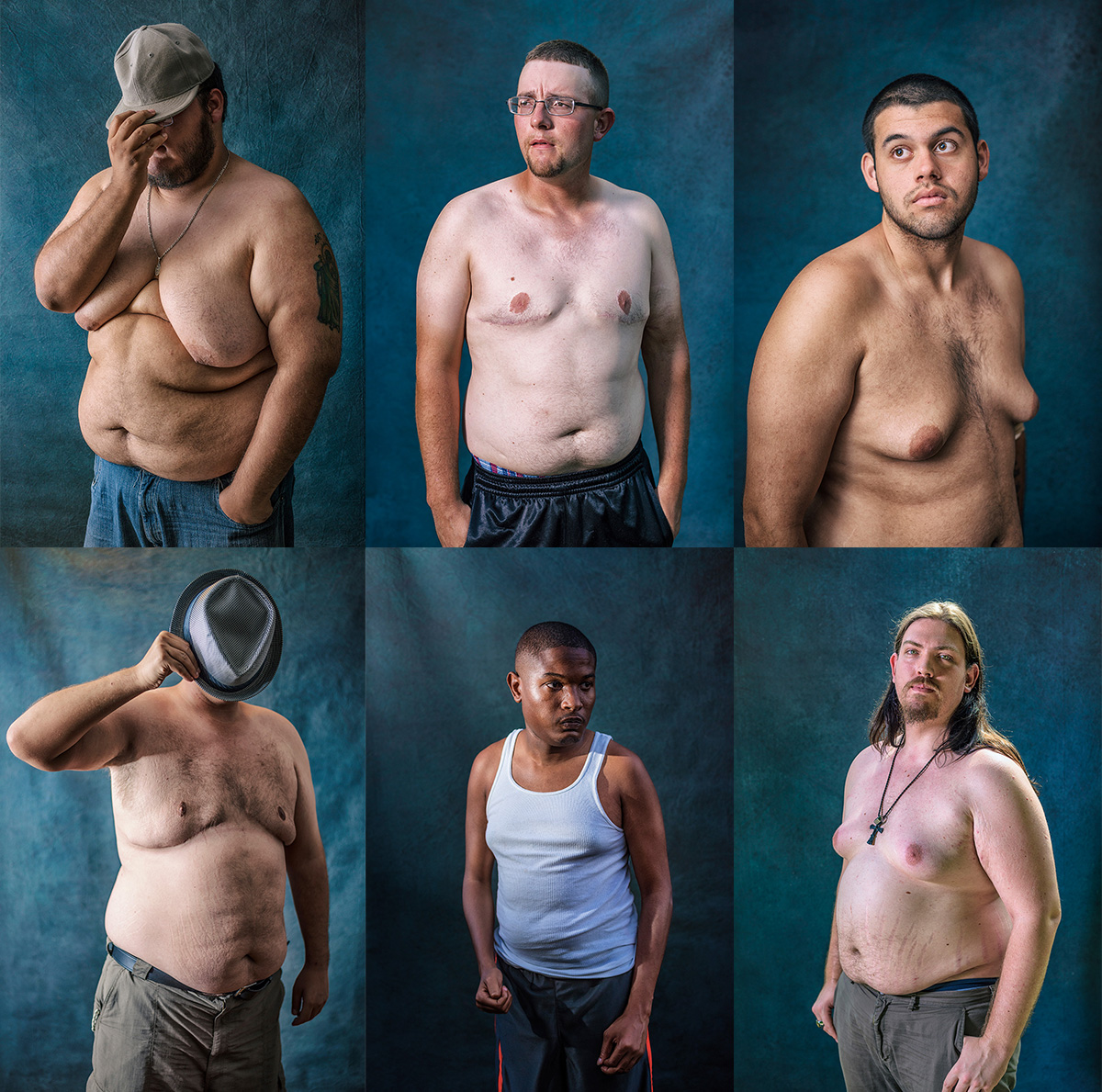True Pain of Risperdal Side Effects Captured in New Photo Series
It's one thing to hear about a drug causes adolescent boys to develop female breasts. It's something else altogether to see it.
The drug in question is Risperdal. The condition is called gynecomastia, a side effect that Johnson & Johnson misrepresented while promoting the drug. In 2012, Johnson & Johnson paid the government a $2.2 billion fine for illegally marketing the antipsychotic to children. Now, more than 18,000 boys, many now young men, have filed claims against Johnson & Johnson. While there's been some press about the massive lawsuit, one thing is noticeably missing from the reports: photos of the victims.

This is understandable in light of how sensitive and embarrassing the condition is for the boys who have suffered. Nonetheless, this is a story that needs to be seen to be adequately understood.
It would take a special photographer to work with the young men and make them feel comfortable enough to have a stranger photograph their condition. That photographer turned out to be Richard Johnson.
Johnson received recognition for his “Weapon of Choice” project which provided a visual representation of the invisible pain caused by verbal abuse and bullying.
“In the ‘Weapon of Choice’ project, we asked people to confront the thing in their life that had caused them the most pain,” Johnson said. “As a result we were able to capture genuine anguish, and I think that's why people connected with the photos. We tried to do the same thing with the ‘Risperdal Boys’ project.”
For the “Weapon of Choice” project, participants signed up on Facebook and came to Johnson’s studio. For the Risperdal project, Johnson had to cooperate with lawyers to find young men who were even willing to consider participating. The handful of young men who volunteered all lived hundreds of miles apart from one another.
“With some help from Google maps, we calculated routes and drive times,” Johnson said. The result was a travel plan that sent him on a six-day road trip that hit ten cities and covered four thousand miles in six days. “When we weren't shooting or sleeping,” he said, “we were driving.”
The trip took him to inner-city Detroit and to Indiana soy fields -- from a forgotten Oklahoma town to a college dorm in Cleveland. When marketing Risperdal, Johnson & Johnson disproportionately targeted clinics that treated patients on Medicaid, so the drug’s victims are disproportionately lower-income.
Johnson wanted the the photographs to work as a cohesive series, but that was a challenge because he couldn't control the circumstances of each shoot. To tackle this challenge, Johnson took three sets of photos for each subject: candids, posed shots in the natural environment, and shots in front of a backdrop with a single strobe.
“We only had a couple of hours with each subject, and we had to work where they were comfortable. Sometimes that meant shooting outside at sunset, and sometimes it meant shooting inside at midnight,” Johnson said. In post production he was able to make color corrections, and to the untrained eye, the final series looks like it may have all been shot in the same studio. The candids ended up providing a startling complement to the project.
At the end of the trip, Johnson wasn't sure if he'd be able to use any of the photos. “To get them to agree to the shoot, we promised that they'd have final say over whether any of the photos would ever be used. We didn't even talk about model release forms until we showed them the photos.” Only six of the ten candidates made it to the final project.
Of the young men who agreed to allow their pictures to be used, to a man, it was because they wanted the world to know what happened to them. Most of the young men in the project suffered alone; they've never met someone else with their condition. All agreed their struggle would be easier if they knew others were facing the same bullying and social isolation that they faced as a boy with breasts.
That's why Richard Johnson, the photographer, decided to make the photos free to anyone who wants to tell the story of the Risperdal Boys. “There are potentially tens of thousands more guys out there that don't know why they’ve developed breasts, and they don't realize how many others have similar stories.”
Despite the 2012 criminal fine and the thousands of pending lawsuits, Johnson & Johnson sold $800 million worth of Risperdal in 2016.
